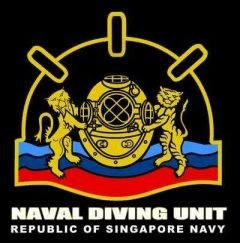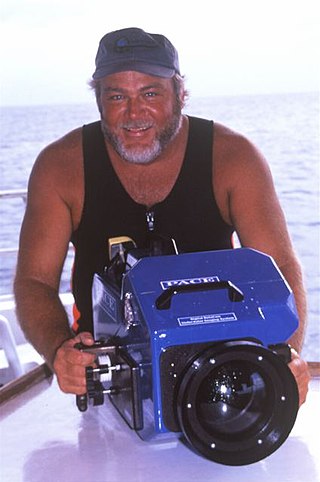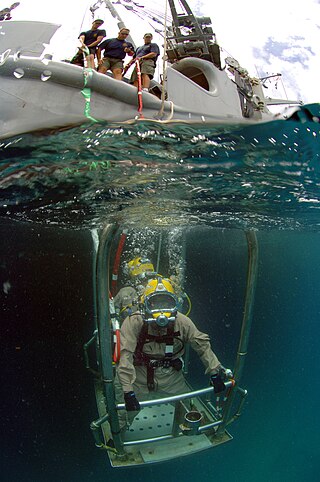Donna M. Tobias | |
|---|---|
 | |
| Born | 22 May 1952 |
| Died | 21 September 2010 (aged 58) |
| Known for | Deep sea diving |
Donna M. Tobias (22 May 1952 – 21 September 2010) was an American diver. She was the United States Navy's first female deep sea diver.
Donna M. Tobias | |
|---|---|
 | |
| Born | 22 May 1952 |
| Died | 21 September 2010 (aged 58) |
| Known for | Deep sea diving |
Donna M. Tobias (22 May 1952 – 21 September 2010) was an American diver. She was the United States Navy's first female deep sea diver.
Tobias was born on 22 May 1952, to parents Elmer and Marie Tobias in Los Angeles, California. [1] [2] Her father was a former World War II bomber crewman and prisoner of war. [3] As she grew up in a poor household, Tobias took a job as a school bus driver and worked at the police department after high school. [2]
Upon enlisting in the Navy in March 1974, she asked a Navy recruiter about the possibility of her becoming a diver. She was refused entry because of her sex and instead chose to focus on shipfitting and hull technician. [4] While working as a shipfitter and hull technician for the Navy, she applied for a waiver to attend dive school. [5] She was required to get permission from The Pentagon before being assigned to training in Norfolk. [2]

At the age of 21, she applied to the Navy 2nd Class Diving School and was accepted two days before the program started in January 1975. [5] During training, she was required to dive while carrying more than 200 pounds of gear in dark, cold or turbulent water. Despite this, Tobias became the first woman to graduate from the Navy Deep Sea Diving School and went on to work with the Navy search and salvage operations. [6] However, she was still limited opportunities due to her gender. She was unable to join sea duty billets so she accepted a position as an instructor at the Submarine Escape Training Tank at Submarine Naval Base in New London. [3] Tobias also worked within the hyperbaric chamber to treat divers suffering embolisms and civilians suffering from carbon monoxide poisoning and gangrene. [1] Retired Master Diver Steven Lechner believed Tobias was the first woman to teach in the escape tank. [5] Her brother Gary also enlisted in the Army, and she was his instructor at the diving school on base. [3]
After eight years in the Navy, Tobias earned her bachelor's degree in education and a master's in psychology and taught special-education classes at New London High School. [3] In 2001, she was inducted into the Women Divers Hall of Fame. [7]
At the age of 58, Tobias died by suicide due to depression on 21 September 2010. [1]
In 2018, the Naval Submarine Base New London unveiled a dive locker named after Tobias. [8]

A frogman is someone who is trained in scuba diving or swimming underwater in a tactical capacity that includes military, and in some European countries, police work. Such personnel are also known by the more formal names of combat diver, combatant diver, or combat swimmer. The word frogman first arose in the stage name the "Fearless Frogman" of Paul Boyton in the 1870s and later was claimed by John Spence, an enlisted member of the U.S. Navy and member of the OSS Maritime Unit, to have been applied to him while he was training in a green waterproof suit.
The National Association of Underwater Instructors is a nonprofit association of scuba instructors founded in 1960 by Albert Tillman and Neal Hess.

Professional diving is underwater diving where the divers are paid for their work. Occupational diving has a similar meaning and applications. The procedures are often regulated by legislation and codes of practice as it is an inherently hazardous occupation and the diver works as a member of a team. Due to the dangerous nature of some professional diving operations, specialized equipment such as an on-site hyperbaric chamber and diver-to-surface communication system is often required by law, and the mode of diving for some applications may be regulated.

The various diver insignia of the uniformed services of the United States are badges awarded to service personnel once they have graduated an appropriate diving course. The badges' origins lie in the cloth patch decoration worn by United States Navy divers on the upper-portion of the enlisted service uniform's left sleeve during the first part of World War II, when the rating insignia was worn on the right sleeve. When enlisted rating insignia were shifted to the left sleeve in late World War II, the patch shifted to the upper right sleeve. The Navy transitioned to a metal breast insignia in the late 1960s, with the other services following suit over the following decades.

The Naval Diving Unit (NDU), also referred to as the Naval Divers, is the special forces formation of the Republic of Singapore Navy (RSN) responsible for conducting special operations from sea, air, and land. The formation is made up of six squadrons, specialising in explosive ordnance disposal, underwater demolition, maritime security operations, and combatant craft operations.

HMS Affray was a British Amphion-class submarine. Affray was built in the closing stages of the Second World War. She was one of 16 submarines of her class which were originally designed for use in the Pacific Ocean against Japan.

A United States Navy diver may be a restricted fleet line officer, Civil Engineer Corps (CEC) officer, Medical Corps officer, an Unrestricted Line Officer who is qualified in Explosive Ordnance Disposal (EOD) Warfare (1140) or an enlisted who is qualified in underwater diving and salvage. Navy divers serve with fleet diving detachments and in research and development. Some of the mission areas of the Navy diver include: marine salvage, harbor clearance, underwater ship husbandry and repair, submarine rescue, saturation diving, experimental diving, underwater construction and welding, as well as serving as technical experts to the Navy SEALs, Marine Corps, and Navy EOD diving commands.

USS Kittiwake (ASR-13) was a United States Navy Chanticleer-class submarine rescue vessel in commission from 1946 to 1994.

American Nitrox Divers International was founded by Ed Betts and Dick Rutkowski in 1988.

The US employs divers in several branches of the armed forces, including the navy, army, marines, air force and coast guard.
Robert Croft is a free-diver who, in 1967, became the first person to free-dive beyond the depth of 200 feet. Croft was a US Navy diving instructor in 1962 at the US Naval Submarine Base New London submarine school in Groton, Connecticut. At the submarine escape training tank, instructors train prospective submariners how to escape from a disabled submarine, which could be resting on the sea bottom.

Bret Clifton Gilliam was an American pioneering technical diver. He was most famous as co-founder of the certification agency Technical Diving International along with Mitch Skaggs, and as the one time holder of the world record for deep diving on air. He is also one of diving's most popular writers. Gilliam is the author or coauthor of 72 books, over 1500 feature magazine articles, and over 100 magazine cover photos. In his diving career he has logged over 19,000 dives since 1959.

Diver training is the set of processes through which a person learns the necessary and desirable skills to safely dive underwater within the scope of the diver training standard relevant to the specific training programme. Most diver training follows procedures and schedules laid down in the associated training standard, in a formal training programme, and includes relevant foundational knowledge of the underlying theory, including some basic physics, physiology and environmental information, practical skills training in the selection and safe use of the associated equipment in the specified underwater environment, and assessment of the required skills and knowledge deemed necessary by the certification agency to allow the newly certified diver to dive within the specified range of conditions at an acceptable level of risk. Recognition of prior learning is allowed in some training standards.

A diving instructor is a person who trains, and usually also assesses competence, of underwater divers. This includes freedivers, recreational divers including the subcategory technical divers, and professional divers which includes military, commercial, public safety and scientific divers.

Army engineer divers are members of national armies who are trained to undertake tasks underwater, including reconnaissance, demolition, and salvage. These divers have similar skills and qualifications as professional divers. Army divers use both surface supplied "Hard hat" and SCUBA to perform their missions. In the United States Army, they are members of the Corps of Engineers. In the British Army, they may be Royal Engineer Divers or Commando Engineer Divers.

The United States Navy Center for Explosive Ordnance Disposal and Diving (CENEODDIVE) is one of the eleven learning centers responsible for training explosive ordnance disposal technicians and divers in the United States. CENEODDIVE is stationed on Naval Support Activity Panama City (NSA PC) in Florida and forms a part of the Naval Education and Training Command. With the exception of the Great Lakes learning site, CENEODDIVE is the only inter-service learning center.

The history of scuba diving is closely linked with the history of the equipment. By the turn of the twentieth century, two basic architectures for underwater breathing apparatus had been pioneered; open-circuit surface supplied equipment where the diver's exhaled gas is vented directly into the water, and closed-circuit breathing apparatus where the diver's carbon dioxide is filtered from the exhaled breathing gas, which is then recirculated, and more gas added to replenish the oxygen content. Closed circuit equipment was more easily adapted to scuba in the absence of reliable, portable, and economical high pressure gas storage vessels. By the mid-twentieth century, high pressure cylinders were available and two systems for scuba had emerged: open-circuit scuba where the diver's exhaled breath is vented directly into the water, and closed-circuit scuba where the carbon dioxide is removed from the diver's exhaled breath which has oxygen added and is recirculated. Oxygen rebreathers are severely depth limited due to oxygen toxicity risk, which increases with depth, and the available systems for mixed gas rebreathers were fairly bulky and designed for use with diving helmets. The first commercially practical scuba rebreather was designed and built by the diving engineer Henry Fleuss in 1878, while working for Siebe Gorman in London. His self contained breathing apparatus consisted of a rubber mask connected to a breathing bag, with an estimated 50–60% oxygen supplied from a copper tank and carbon dioxide scrubbed by passing it through a bundle of rope yarn soaked in a solution of caustic potash. During the 1930s and all through World War II, the British, Italians and Germans developed and extensively used oxygen rebreathers to equip the first frogmen. In the U.S. Major Christian J. Lambertsen invented a free-swimming oxygen rebreather. In 1952 he patented a modification of his apparatus, this time named SCUBA, an acronym for "self-contained underwater breathing apparatus," which became the generic English word for autonomous breathing equipment for diving, and later for the activity using the equipment. After World War II, military frogmen continued to use rebreathers since they do not make bubbles which would give away the presence of the divers. The high percentage of oxygen used by these early rebreather systems limited the depth at which they could be used due to the risk of convulsions caused by acute oxygen toxicity.

The following outline is provided as an overview of and topical guide to underwater diving:

Underwater Construction Teams (UCT) are the United States Navy Seabees' underwater construction units numbered 1 and 2 that were created in 1974. A team is composed of divers qualified in both underwater construction and underwater demolition. Possible tasks can be: battle damage repairs, structural inspections and assessments, demolition of waterline facilities or submerged obstructions, installation of submerged surveillance systems, or harbor and channel clearance. As needed, teams may test and or evaluate new or existing aquatic systems or equipment. Extending construction, whether vertical or horizontal, beyond the shoreline and waterline is their specialty. Reflecting Seabee tradition, teams are expected to execute underwater construction anywhere, anytime, under any conditions.